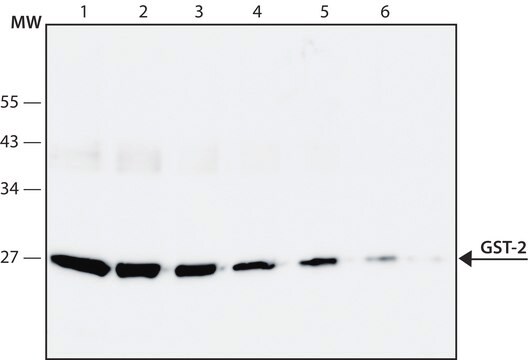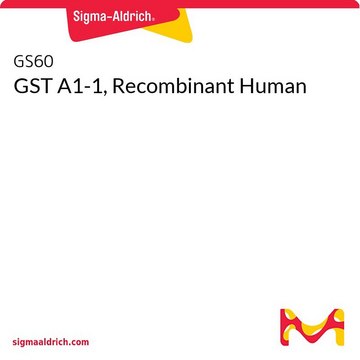CS0410
Glutathione-S-Transferase (GST) Assay Kit
sufficient for 500 multiwell tests
Synonym(s):
GST Enzyme Activity Kit
About This Item
Recommended Products
usage
sufficient for 500 multiwell tests
Quality Level
shipped in
dry ice
storage temp.
−20°C
Gene Information
human ... GSTA4(2941) , GSTM1(2944)
General description
and erythrocyte lysates
Application
Biochem/physiol Actions
Kit Components Only
- Dulbecco's Phosphate Buffered Saline 100 mL
- L-Glutathione Reduced 1 g
- GST (Control) .1 mL
- Sample Buffer 5 mL
- Substrate (CDNB) 1.2 mL
Signal Word
Danger
Hazard Statements
Precautionary Statements
Hazard Classifications
Acute Tox. 2 Dermal - Acute Tox. 4 Oral - Aquatic Acute 1 - Aquatic Chronic 1 - Eye Dam. 1 - Skin Irrit. 2 - Skin Sens. 1
Storage Class Code
6.1A - Combustible acute toxic Cat. 1 and 2 / very toxic hazardous materials
Flash Point(F)
Not applicable
Flash Point(C)
Not applicable
Certificates of Analysis (COA)
Search for Certificates of Analysis (COA) by entering the products Lot/Batch Number. Lot and Batch Numbers can be found on a product’s label following the words ‘Lot’ or ‘Batch’.
Already Own This Product?
Find documentation for the products that you have recently purchased in the Document Library.
Customers Also Viewed
Our team of scientists has experience in all areas of research including Life Science, Material Science, Chemical Synthesis, Chromatography, Analytical and many others.
Contact Technical Service







